Let’s keep it real. Braces can feel a little weird at first, but we promise you’ll get used to them. You’ll be able to go about your regular day-to-day activities with your usual enthusiasm. We’ll teach you how to adapt to life with braces and give you tons of tips for a comfortable experience. Though the transition is fairly easy, there are a few things to keep in mind:
LIFE WITH BRACES

Brushing and Flossing:
Brushing your teeth is basically the same with or without braces, but with braces you’ll have to step up your brushing game a bit and make sure to get in and around all those nooks and crannies after each meal. You probably don’t want to smile at your crush and unwittingly have a piece of lettuce stuck in your braces. Brushing will help you avoid some potentially embarrassing situations. But it also helps to ward off permanent stains, cavities and inflammation of the gums.
Make sure you brush the inside, outside, and biting surface of your teeth. Angle your toothbrush towards the gums and wiggle it back and forth to get those bristles between the wires and brackets. Also, be sure to gently brush the gum line. You’ve heard it before, and you’re going to hear it again: You should be brushing your teeth for about two minutes each time! Don’t forget to replace that toothbrush every three months and to continue seeing your dentist for check ups every six months.
In a pinch, you can rinse your mouth out after a snack or meal. Although brushing is the way to go, we’re realistic and realize you probably won’t have your toothbrush with you 24 hours a day. Rinse your mouth with water and then brush when you get home.
Flossing with braces is a little trickier. Flossing once a day will help you maintain a sparkling, clean smile. You will need a floss threader to pass the floss under the main wire and then in between two teeth. Slide the floss up and down on each side of the tooth before moving on to the next pair of teeth. You’ll quickly get the hang of a floss threader. Expert tip: Go for waxed floss. Braces can shred regular floss and leave you with a stringy mess.
What to Eat with Braces:
Fortunately braces won’t cramp your snacking style too much. You can still eat most of the foods you love. Right after getting your braces on and following adjustments, you may want to stick with softer foods and cold drinks if your teeth feel tender.
Cut or break hard and chewy foods into bite-sized pieces and strip food like corn on the cob. Make everything as easy to eat as possible. As your teeth move into position, you may need to switch up your chewing habits. Chew everything with your back teeth and avoid biting with your front teeth.
True to our dentist roots, we don’t recommend sticky, sugary foods, like caramel, with braces, and it’s best to avoid popcorn and foods that will get stuck between brackets, which can cause inflammation or broken braces. Limit your intake of soda and other extremely sugary beverages as well because the sugar can lead to tooth decay. Our team is here for you if you’re unsure or have any questions.
Comfort Care Tips:
In the rare event that an orthodontic discomfort pops up, we’re here for you. Call us and we’ll get you in for an appointment to fix the issue, if necessary. In the meantime, we’ve listed a few temporary home remedies to keep you comfortable with some of the common braces discomforts:
Poking Wires
As your teeth move sometimes wires may poke out. Ugh. We feel your pain. Luckily there are some quick fixes:
- Dry the tooth and bracket with a bit of cotton or tissue, and then break out your dental wax. Roll it into a ball, stick it onto the bracket and wire and maneuver it into position. That’s it. The poking will stop.
- If the wire has rubbed a small sore area on the inside of your cheek or lips, rinse with some warm salt water to clean and soothe the area.
- If a bracket comes loose in the back of your mouth, unfortunately the piece of wire could be pretty long. If this is the case, you can try to snip the wire with nail clippers. Be extremely careful to avoid breaking remaining brackets. We’ll schedule a visit as soon as possible to get you back on track.
Broken Bracket
This is the most common issue and might be due to certain foods (we’re looking at you taffy), physical trauma to the mouth, or saliva contamination during the bonding procedure. Here’s the solution:
- If the offending bracket is in the back of your mouth, remove the bracket from the wire.
- For broken brackets in the front or middle of your mouth, dry the bracket with cotton or a tissue, break off a piece of dental wax, roll into a ball and place it over the bracket to keep it from causing irritation.
- Figure out which tooth the loose bracket is on by counting from the back tooth. Give us a call and tell us which one it is. We’ll let you know if you can wait until your next appointment or if you need to get in immediately.
Lip and Cheek Irritation
Sometimes it takes a few days to get used to braces. During this adjustment period, the brackets and wires can irritate the lips and cheeks.
Again, wax will be your best friend. Dry the bracket with cotton or a tissue, take a small piece of wax and roll it into a ball and place it over the bracket and wire. That should do the trick. If the irritation continues, give us a call and we’ll help you out.

